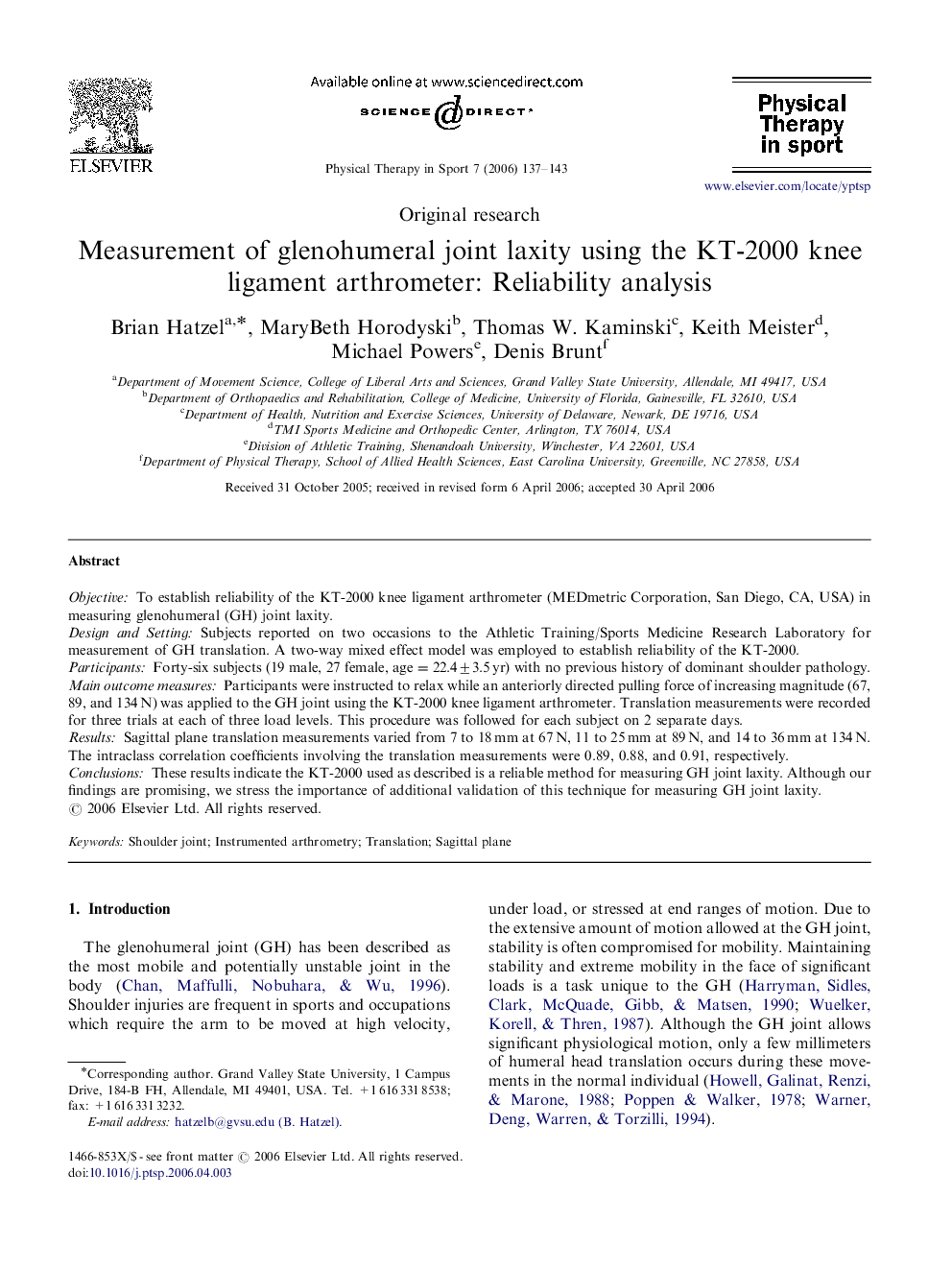| کد مقاله | کد نشریه | سال انتشار | مقاله انگلیسی | نسخه تمام متن |
|---|---|---|---|---|
| 2714359 | 1145242 | 2006 | 7 صفحه PDF | دانلود رایگان |

ObjectiveTo establish reliability of the KT-2000 knee ligament arthrometer (MEDmetric Corporation, San Diego, CA, USA) in measuring glenohumeral (GH) joint laxity.Design and SettingSubjects reported on two occasions to the Athletic Training/Sports Medicine Research Laboratory for measurement of GH translation. A two-way mixed effect model was employed to establish reliability of the KT-2000.ParticipantsForty-six subjects (19 male, 27 female, age=22.4±3.5 yr) with no previous history of dominant shoulder pathology.Main outcome measuresParticipants were instructed to relax while an anteriorly directed pulling force of increasing magnitude (67, 89, and 134 N) was applied to the GH joint using the KT-2000 knee ligament arthrometer. Translation measurements were recorded for three trials at each of three load levels. This procedure was followed for each subject on 2 separate days.ResultsSagittal plane translation measurements varied from 7 to 18 mm at 67 N, 11 to 25 mm at 89 N, and 14 to 36 mm at 134 N. The intraclass correlation coefficients involving the translation measurements were 0.89, 0.88, and 0.91, respectively.ConclusionsThese results indicate the KT-2000 used as described is a reliable method for measuring GH joint laxity. Although our findings are promising, we stress the importance of additional validation of this technique for measuring GH joint laxity.
Journal: Physical Therapy in Sport - Volume 7, Issue 3, August 2006, Pages 137–143